-
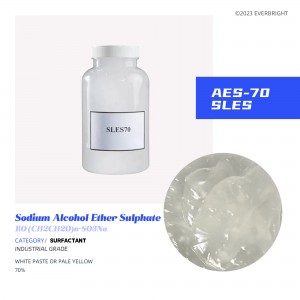
AES-70 / AE2S / SLES
AES په اوبو کې په اسانۍ سره محلول کیږي، د غوره پاکولو، لندبل، جذب، توزیع او فوم کولو ملکیتونو سره، ښه ضخامت اغیز، ښه مطابقت، د بایوډیګریشن ښه فعالیت (د تخریب کچه تر 99٪ پورې)، د مینځلو نرم فعالیت به پوستکي ته زیان ونه رسوي، ټیټ خارښ د پوټکي او سترګو لپاره، یو غوره انونیک سرفیکټینټ دی.
-

یوریا
دا یو عضوي مرکب دی چې د کاربن، نایتروجن، اکسیجن او هایدروجن څخه جوړ شوی، یو له ساده عضوي مرکباتو څخه دی، او د نایتروجن اصلي پای محصول دی چې د پروټین میتابولیزم او په تی لرونکو حیواناتو او ځینو کبانو کې تخریب کیږي، او یوریا د امونیا او کاربن لخوا ترکیب کیږي. ډای اکسایډ په صنعت کې د ځانګړو شرایطو لاندې.
-
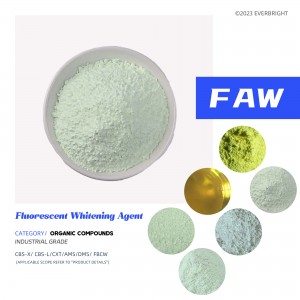
د فلوروسینټ سپین کولو ایجنټ (FWA)
دا یو مرکب دی چې د 1 ملیون څخه تر 100,000 برخو په ترتیب کې خورا لوړ کوانټم موثریت لري ، کوم چې کولی شي په مؤثره توګه طبیعي یا سپین سبسټریټونه سپین کړي (لکه ټوکر ، کاغذ ، پلاستیک ، کوټینګونه).دا کولی شي د 340-380nm طول موج سره د بنفش ر lightا جذب کړي او د 400-450nm طول موج سره نیلي ر lightا جذب کړي ، کوم چې کولی شي په مؤثره توګه د سپینو موادو د نیلي ر lightا نیمګړتیا له امله رامینځته شوي ژیړ رنګ رامینځته کړي.دا کولی شي د سپینو موادو سپینوالی او روښانتیا ته وده ورکړي.د فلوروسینټ سپین کولو اجنټ پخپله بې رنګ یا سپک ژیړ (شین) رنګ دی ، او په پراخه کچه په کور دننه او بهر د کاغذ جوړولو ، ټوکر ، مصنوعي صابون ، پلاستیک ، کوټینګ او نورو صنعتونو کې کارول کیږي.دلته 15 بنسټیز ساختماني ډولونه او نږدې 400 کیمیاوي جوړښتونه د فلوروسینټ سپین کولو اجنټانو شتون لري چې صنعتي شوي دي.
-
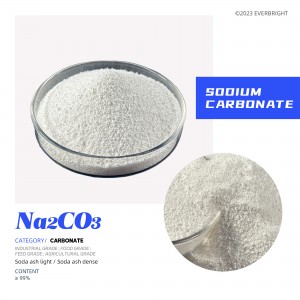
سوډیم کاربونیټ
غیر عضوي مرکب سوډا ایش، مګر د مالګې په توګه طبقه بندي شوي، نه الکلي.سوډیم کاربونیټ یو سپین پوډر دی، بې خونده او بې بوی دی، په اسانۍ سره په اوبو کې حل کیږي، د اوبو محلول په کلکه الکلین دی، په لندبل هوا کې به د سوډیم بای کاربونیټ برخه د لندبل کلپس جذب کړي.د سوډیم کاربونیټ په چمتو کولو کې د ګډ الکلي پروسه، د امونیا الکلي پروسه، د لبران پروسه، او داسې نور شامل دي، او دا د ټرانا لخوا پروسس او پاکول هم کیدی شي.
-
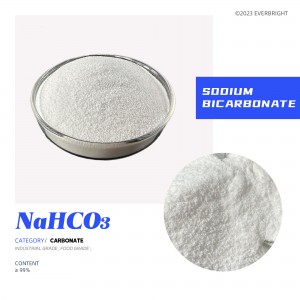
سودیم بای کاربونیت
غیر عضوي مرکب، سپین کرسټال پوډر، بې بوی، مالګین، په اوبو کې محلول.دا په مرطوب هوا یا ګرمه هوا کې په تدریج سره منحل کیږي، کاربن ډای اکسایډ تولیدوي، کوم چې په بشپړ ډول تخریب کیږي کله چې تودوخه 270 ° C ته تودوخه شي. کله چې د تیزاب سره مخ کیږي، دا په کلکه ماتیږي، کاربن ډای اکسایډ تولیدوي.
-
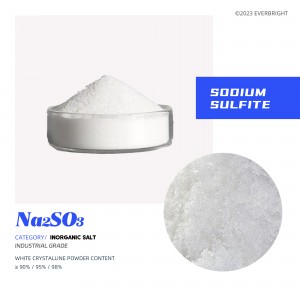
سوډیم سلفیټ
سوډیم سلفیټ، سپینه کرسټال پوډر، په اوبو کې حل کېدونکی، په ایتانول کې حل کېدونکی.نه منحل کلورین او امونیا په عمده ډول د مصنوعي فایبر سټیبلائزر ، د پارچه بلیچ کولو اجنټ ، عکس العمل جوړونکي ، د رنګ بلیچ ډیاکسیډیزر ، د بوی او رنګ کمولو اجنټ ، د کاغذ جوړولو لپاره د لیګین لرې کولو اجنټ په توګه کارول کیږي.
-
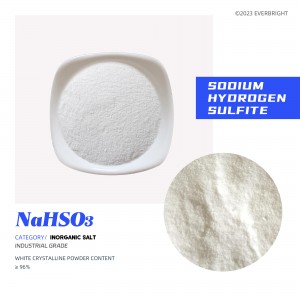
سوډیم هایډروجن سلفیټ
په حقیقت کې، سوډیم بیسلفائٹ یو ریښتینی مرکب نه دی، مګر د مالګې مخلوط دی چې کله په اوبو کې منحل شي، د سوډیم ایونونو او سوډیم بیسلفائٹ آئنونو څخه جوړ شوي محلول تولیدوي.دا د سلفر ډای اکسایډ بوی سره د سپینو یا ژیړ سپین کرسټالونو په بڼه راځي.
-
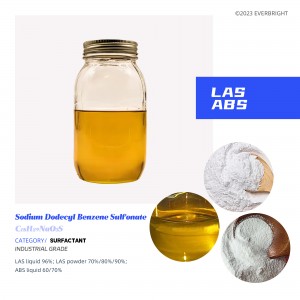
سوډیم ډوډیسیل بینزین سلفونیټ (SDBS/LAS/ABS)
دا یو عام استعمال شوی انیونک سرفیکټینټ دی، کوم چې یو سپین یا سپک ژیړ پاؤډر / فلیک جامد یا نسواري مایع دی، د بې ثباته کولو لپاره ستونزمن، په اوبو کې د منحل کولو لپاره اسانه، د شاخ شوي زنځیر جوړښت (ABS) او مستقیم زنځیر جوړښت (LAS)، د څانګو زنځیر جوړښت د بایوډیګریډیبلیت کې کوچنی دی ، چاپیریال ته به د ککړتیا لامل شي ، او د مستقیم زنځیر جوړښت د بایو ډیګریډ کولو لپاره اسانه دی ، د بایوډیګریډ وړتیا له 90٪ څخه ډیر کیدی شي ، او د چاپیریال ککړتیا کچه کوچنۍ ده.
-

ډوډیسیلبینزینسولفونیک اسید (DBAS/LAS/LABS)
ډوډیسیل بینزین د کلوروالکیل یا α-olefin د بینزین سره د کنډنشن په واسطه ترلاسه کیږي.ډوډیسیل بینزین د سلفر ټرای اکسایډ یا فومینګ سلفوریک اسید سره سلفون شوی دی.روښانه ژیړ څخه تر نسواري ویسکوس مایع ، په اوبو کې حل کیږي ، ګرم کله چې په اوبو سره منحل شي.په بینزین، xylene، په میتانول، ایتانول، پروپیل الکول، ایتر او نورو عضوي محلولونو کې لږ محلول کیږي.دا د emulsification، خپریدو او پاکولو دندې لري.
-

سوډیم سلفیټ
سوډیم سلفیټ د مالګې د سلفیټ او سوډیم آئن ترکیب دی، سوډیم سلفیټ په اوبو کې محلول کیږي، د هغې محلول اکثرا غیر جانبدار، په ګلیسرول کې محلول کیږي مګر په ایتانول کې نه حل کیږي.غیر عضوي مرکبات، لوړ پاکوالی، د اوبو د مادې ښې ذرې چې د سوډیم پوډر په نوم یادیږي.سپین، بې بوی، تریخ، هایګروسکوپی.شکل بې رنګ، شفاف، لوی کرسټال یا کوچني دانه کرسټال دی.سوډیم سلفیټ د هوا سره د تماس په وخت کې د اوبو جذب کول اسانه دي، په پایله کې سوډیم سلفیټ ډیکاهایډریټ چې د ګلوبورایټ په نوم هم پیژندل کیږي، کوم چې الکلین دی.
-
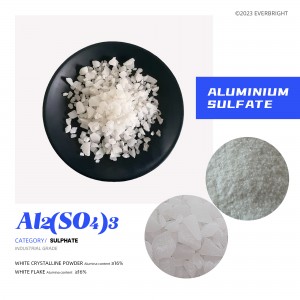
د المونیم سلفیټ
د المونیم سلفیټ یو بې رنګ یا سپین کرسټال پوډر/پوډر دی چې د هایګروسکوپیک ملکیتونو سره.د المونیم سلفیټ ډیر تیزابي دی او کولی شي د الکلي سره عکس العمل وکړي ترڅو ورته مالګه او اوبه رامینځته کړي.د المونیم سلفیټ آبي محلول تیزابي دی او کولی شي د المونیم هایدروکسایډ توزیع کړي.د المونیم سلفیټ یو قوي کوګولینټ دی چې د اوبو درملنې ، کاغذ جوړولو او رنګ کولو صنعتونو کې کارول کیدی شي.
-
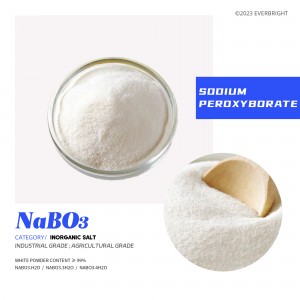
سوډیم پیروکسیبورایټ
سوډیم پربوریٹ یو غیر عضوي مرکب دی، سپینه دانه پوډر.په اسید، الکلي او ګلیسرین کې محلول کیږي، په اوبو کې یو څه محلول کیږي، په عمده توګه د اکسیډینټ، ضد ضد، فنګس وژونکو، مورډنټ، ډیوډرینټ، د پلیټینګ محلول اضافه کولو، او داسې نورو په توګه کارول کیږي. پر







